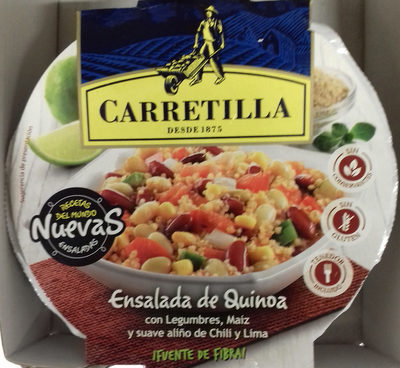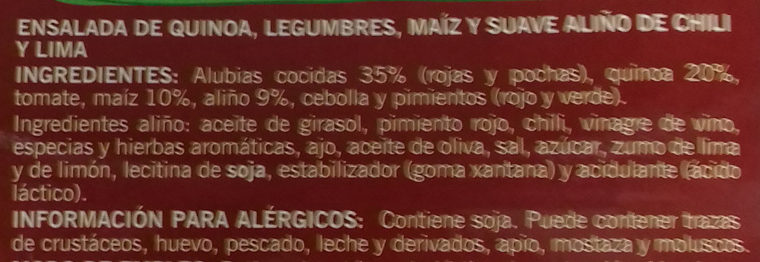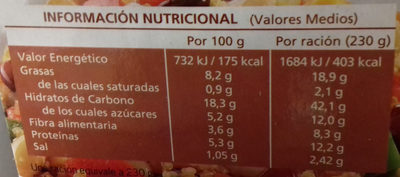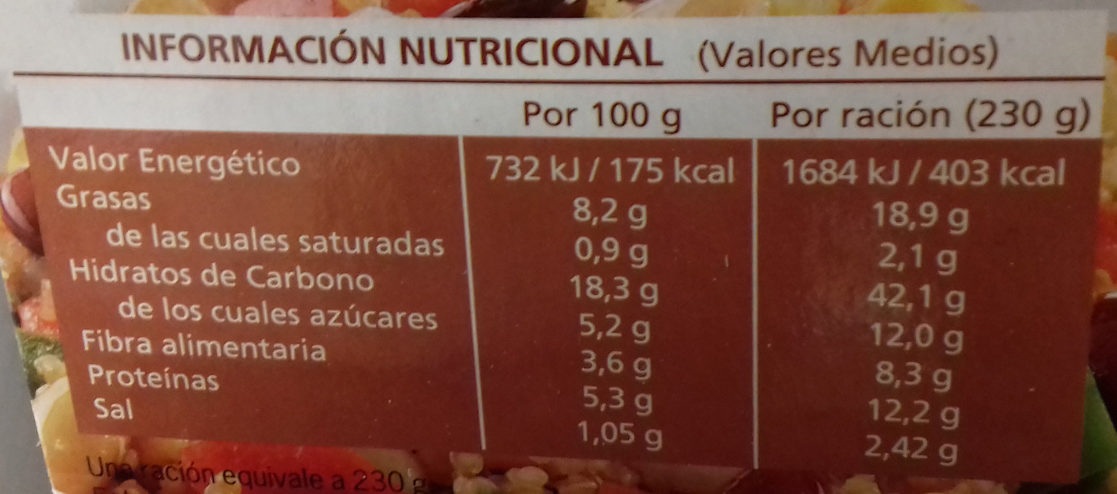Ensalada de quinoa - Carretilla - 230 g
This product page is not complete. You can help to complete it by editing it and adding more data from the photos we have, or by taking more photos using the app for Android or iPhone/iPad. Thank you!
×
Barra-kodea: 8410416008910 (EAN / EAN-13)
Izen arrunta: Ensalada de quinoa, legumbres, maíz y suave aliño de chili y lima
Kopurua: 230 g
Ontziratzea: en:Plastic, en:container, en:Terrine pot, es:Microondable, es:V gama
Markak: Carretilla
Kategoriak: en:Plant-based foods and beverages, en:Plant-based foods, en:Canned foods, en:Meals, en:Prepared salads, en:Canned meals, en:Plant-based meals, en:salads, es:Ensaladas de quinoa
Etiketak, ziurtagiriak, sariak:
en:No gluten, en:No preservatives, Source of fibre, en:Green Dot, High fibres, es:Tenedor incluido
Link to the product page on the official site of the producer: http://www.carretilla.info/es/productos/...
Dendak: Carrefour
Saltzen diren herrialdeak: Espainia
Matching with your preferences
Ingurumena
Ontziratzea
Transportation
Report a problem
Datuen iturria
Product added on by neptuno
Last edit of product page on by spotter.
Produktuaren orria -gatik editatua fix-ingredientes-bot, kiliweb, packbot, yuka.SHYweVRKay9yTUVhdHNjNzBqRFUzdnRQektLMGNUNk9Edk1qSVE9PQ.










